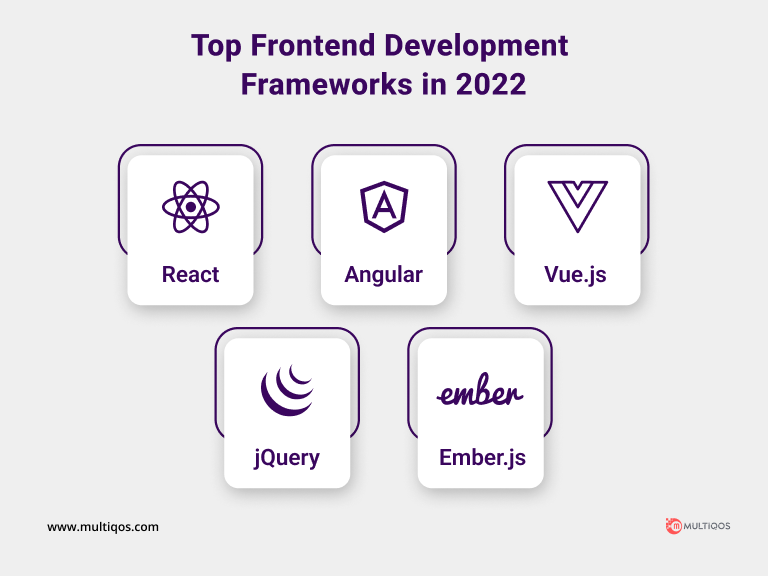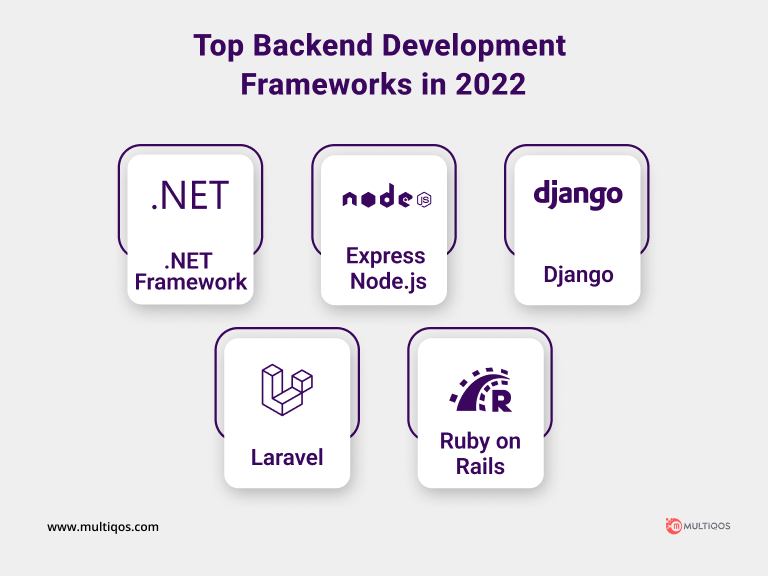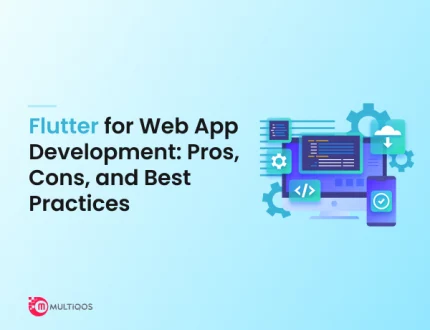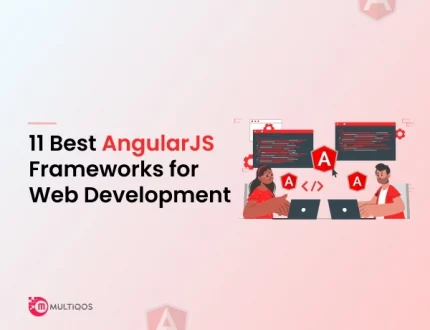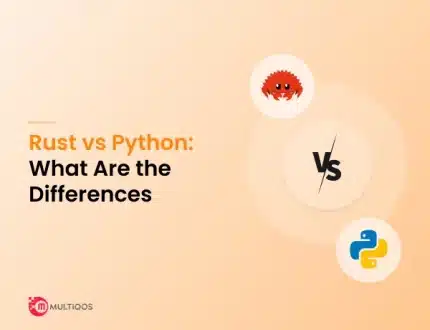Top 10 Web Development Frameworks for 2024: Comparison & More!
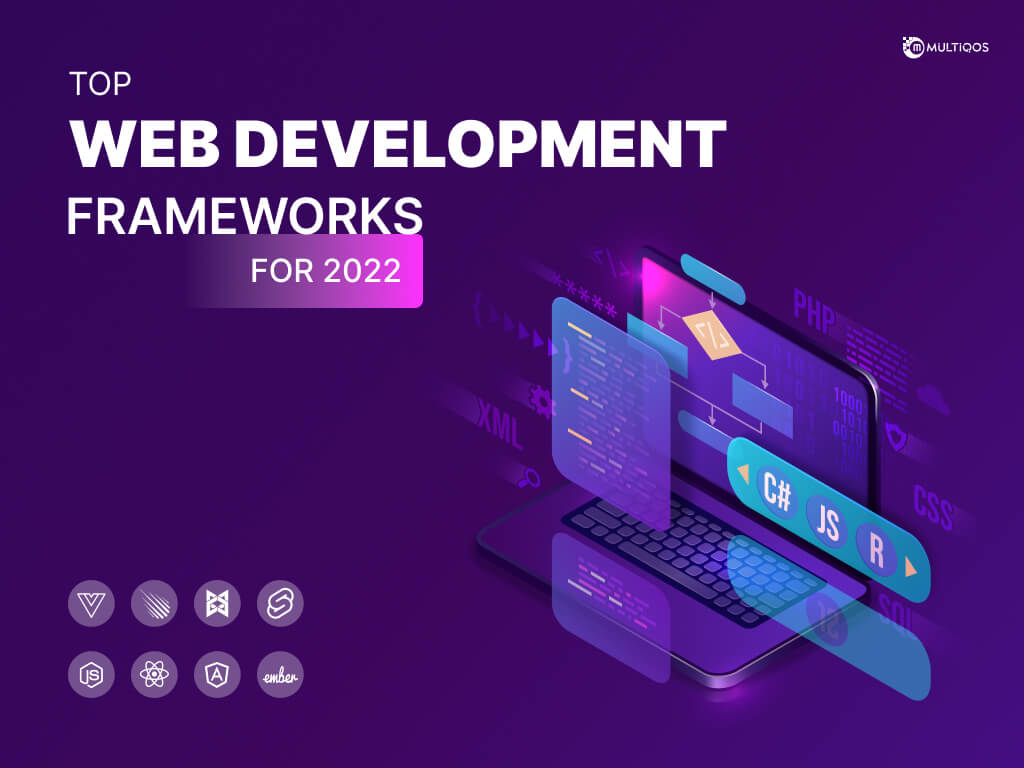
As web development technology advances and the diversity of the online environment expands, the process of developing a feature-rich application becomes significantly more challenging. There has been the emergence of numerous web development company in India that excel at web development services. Nowadays, it’s difficult to please clients with a simple web presence since everyone expects your firm to stay current with emerging technology developments. However, the strain can be significantly decreased if you collaborate with web developers for hire or web development services company who can use cutting-edge web development frameworks such as Laravel, Vue, or Angular.
Introduction to Frameworks
A web development framework or web application framework is a piece of software that enables the creation and management of websites and online applications and web services, web servers, web sources, web portals, and web APIs. Several frameworks have been developed to help with web development, increase flexibility, and reduce time to market. Without frameworks, modern web development would be a nightmare for software developers, since they would be forced to create business logic, security, and database features from scratch.
Choosing the finest web development frameworks for your website and web applications is important to the success of your project. To assist you in selecting the appropriate web development framework and tools, we’ve compiled a list of common popular web development frameworks for 2024 to make it easier for you to decide on the best choice.
What is a Web Framework?
Frameworks provide developers with the tools and functionality necessary to build websites, apps, APIs, services, and other solutions, as well as to establish their standards. As a consequence, you can fast construct the framework for your project and then modify it to meet the parameters. Utility applications, scripting languages, code libraries, as well as software can be included in the best framework for website development to make the creation and integration of diverse components of a major software project easier. Additionally, web development platforms are often customizable, which means that you may customise pre-built layouts and themes to meet your unique requirements. Frequently, web frameworks are classified into two categories: Frameworks for the front-end and frameworks for the back-end.
Frameworks are a group of resources and tools that software developers use to build websites, online applications, and web services. A web framework is a collection of libraries that are used to build a dynamic online application. A web development framework comprises prewritten code that invokes and executes the system. Online web development frameworks make it much easier to develop and implement web applications on the internet. We can use a web development framework to create web services, online resources, and web APIs that can be put on the internet with the primary goal of increasing productivity by automating a web application.
The Top 10 Web Development Frameworks for 2024
By and large, every web application consists of a front-end or client-side component and a back-end or server-side component. As a result, there are two types of enterprise web application development framework accessible for front-end and back-end development. Here is a list of the top 10 framework for web development.
Best Frontend Web Development Frameworks
The best framework for front-end web development is mainly focussed on to create a web application’s front end or user interface. The majority of front-end frameworks are built on top of programming languages like JavaScript, HTML, and CSS. The front-end framework’s role is to produce front-end development services such as the user experience/user interface design and manage other critical components of the program, such as SEO optimization, code snippets, templates, and user interaction management.
React
Although React is not a framework, it is a front-end library, most developers assume it to be one, and it is frequently compared as such. While other frameworks like Angular, Vue and others have since embraced component-based design, React is the first front-end web development framework to use it. React’s virtual dom significantly speeds up dom operations, and it’s relatively simple to learn, owing mostly to its JSX syntax. If you want to use React on the server, you may do so. Facebook created and maintains it, and it is used by both Facebook and Instagram. One of its primary application components is the building of interfaces and the development of mobile applications for Android and iOS utilizing React Native.
Advantages
- React supports various technology stacks and programming languages, enabling the incorporation of new functionality into existing code. For example, you can use React Native for mobile development – a React-based framework focused on hybrid mobile programming (iOS and Android).
- It is difficult to optimize a single page for various keywords because index bots must understand JS requests. React provides a collection of tools for assisting indexation bots in recognizing the page’s content and optimizing the site.
- React converts HTML-based code to the actual page layout in a matter of seconds. In addition, this web development framework supports declarative views, which automatically update the interface anytime the code is modified.
Angular
Angular is a front-end framework that is particularly well-suited for developing rich single-page applications. It’s a dynamic framework capable of developing whole client-side applications, and there’s a lot to explore and learn in Angular. Angular 1.x made use of Javascript, but later versions made use of Typescript, a subset of Javascript. Angular’s main drawbacks are its size and the fact that it isn’t optimised for SEO by default, however both issues may be addressed. angular was designed by Google, and Microsoft, PayPal, and Google utilise it.
One of Angular’s finest advantages is its ability to develop MVC-compliant single-page applications (model-view-controller specifications). Yet, the learning curve can be steep, and the code can occasionally be cumbersome to compile.
Advantages
- The Angular codebase is freely available under the MIT license. The community-curated collection of tools and plugins may also be used to extend the framework.
- The framework is compatible with the most recent releases of Chrome, Firefox, Edge, Android, and iOS.
- Angular builds user interfaces using HTML and modularizes functionality, making it ideal for handling complicated complexity.
Vuejs
Vue.js is the best front-end web development framework that began as a side project and quickly grew into one of the most popular JS frameworks available. Vue offers a slew of incredible features. To begin, it is a progressive framework, which means that if you already have a project, you can use Vue for just a section of it, and everything will work well. Second, it introduces the component architecture, and the Vue ecosystem enables the development of full front-end applications. Some users are hesitant to use Vue since large organizations such as Facebook or Google do not support it, but this is rapidly changing as large companies begin to invest in Vue.
Vuejs supports two-way data binding, which enables tracking model data modifications and view (UI) components. Vue.js, on the other hand, is not as easy to integrate as Angular or React, as Google, Facebook, or Amazon do not support it. Further, Vue.js’s fundamental functionality is straightforward, but libraries, add-ons, and APIs can extend it. Vue.js development services are built on data-reactive tools that connect easily with other projects and frameworks.
Advantages
- A separate document can be used to make changes to your template and style. These components denote sections of code, so boosting codebase readability, and have a comparable appearance to the actual front-end.
- Vue includes a command-line project generator with an intuitive wizard that makes it simple to create a new project and migrate data between codebases.
- You can customize the generator’s functionality to meet your specific requirements. In addition, Vue.js includes a plethora of extra plugins.
- Vue documentation is well-organized and concise. The API documentation is straightforward to locate and read.
- VueJS contains a robust set of debugging tools for the browser, a state manager, and a server render.
jQuery
jQuery is an open-source JavaScript library for developing application user interfaces. Further, jQuery is well-known for its straightforward approach and browser compatibility. The framework enables simple interaction between the DOM’s elements and their syntactic structure. The framework is well-known for its ability to generate extraordinary effects and animations in produced applications. jQuery is lightweight and extensible via plugins.
jQuery enables you to make the most of JavaScript. jQuery condenses numerous lines of code into a single procedure, referred to as a single line of code. jQuery aids in the simplification of complex tasks, including AJAX calls, DOM manipulation, and JavaScript. It’s easier and more consistent to use jQuery when working with HTML elements and JavaScript code. You can hire front-end developers because they can create animated apps similar to Adobe FLASH. It enables you to save time and create precise animated applications similar to FLASH.
Advantages
- It is quite simple to use. jQuery is fairly simple to comprehend.
- jQuery is extensible and enables the addition of plugins. It supports a large number of libraries.
- The open-source software community supports jQuery because it provides excellent technical support.
- It benefits from a vibrant open-source community.
- jQuery comes with comprehensive documentation.
Emberjs
Ember Addon — a collection of official Ember utilities – provides ready-to-use packages for routing, dependency management, data management, and more. Ember, a Javascript framework, was voted the best in the world in 2015. Ember’s user base has grown to enormous proportions over the last several years, and the number of new features and updates is continually increasing. Ember supports two-way data binding in the same way as Angular does, and it ships with a slew of functionality and components. This framework is frequently used by Google, Microsoft, Heroku, and Netflix. Ember is centered on developer efficiency, attempting to maximize it by obviating the necessity for time-consuming operations or including specific JS best practices into its fundamental design.
Ember’s package ecosystem is well-developed. As a result, you may rest assured that you will discover solutions to your challenges. The framework includes a dedicated website that categorizes and organizes the packages according to their rating, category, and individual documentation. In addition, Ember supports data binding, which enables the creation of a relationship between two properties, such that when one property’s value changes, the other property automatically upgrades.
Advantages
- EmberJS is a framework that is doc- and API-friendly.
- EmberJS’s data layer is more robust and tightly coupled to Java.
- Emberjs is releasing a new theme, Ember Octane, that will assist you in learning Ember more effectively through the use of incremental classes and native Javascript rendering.
- Ember is another open-source framework worth considering. It enables you to create modern user interfaces for web solutions and mobile and desktop applications that operate on all devices. Ember follows the MVVM pattern.
- An important aspect of Ember is the default generation of a testing program for each new entity.
- When you use Ember, you can always count on the platform’s front-end developer for hire, who can assist you in releasing new features and improving the platform.
Also Read: Web Application Development: A Complete Guide for 2024
Best Backend Web Development Frameworks
The back-end frameworks are used to develop the back-end or the applicable portion that is not visible to the user but is necessary for the web application to function. .NET, Ruby, Python, Java, and PHP are used to write the back-end frameworks. They accomplish this by addressing server and database operation, routing protocols, solution logic and architecture, authorization options, and data security, among other things. You could also use the top back-end frameworks 2024 to write your code.
.NET Framework
The back-end web framework Net is one of the best. It’s a free and open-source platform for building internet apps. IoT, web, mobile, desktop, and gaming apps can all be developed with ease thanks to this open source framework. To develop a.NET application, you can utilize Visual Basic, C#,m .NET, or F#. The code will run natively on any operating system (operating system). The.NET implementations assist in managing complicated cross-platform tasks and enable the development of websites, services, and desktop applications.
Advantages
- The NET framework is built on object-oriented programming, enabling developers to work on discrete pieces of software and successfully combine them.
- Comes with an excellent caching system for efficiently storing data, enabling developers to optimize and scale performance.
- It includes the Visual Studio IDE (Integrated development environment) for debugging and publishing applications across several platforms and operating systems.
- The.NET framework includes built-in, and third-party user interface controls, such as Telerik’s.
- To ensure the application’s security, Windows authentication is employed. Also, to ensure the data’s security, .NET includes cryptography classes containing encrypted and decrypted data.
- It includes an MVC model view controller that utilises the SoC (Separation of Concerns) technique to provide organised code.
Express – Node.js Framework
Express takes pride in being a lean, quick, and opinion-free framework. Node.js’ powerful asynchronous performance is leveraged to provide some fundamental framework functions without hiding Node’s characteristics. Even more importantly, it is extremely flexible and can handle both REST APIs and full programmes. Perhaps the most significant disadvantage of Express is the lack of a set manner of doing things, at least for novices.
Express enables the building of modern online applications through sophisticated capabilities like rapid server-side development and middleware. Express offers middleware and a large range of HTTP utility methods, allowing for the rapid development of complex web APIs. It covers several critical subjects without hiding Node’s characteristics and forces a strong presentation of asynchronous Node.js. Express.js is one of the most popular open-source web frameworks since it provides a large number of amazing tools for web development services and countless solutions that can be produced with only a few lines of code.
Advantages
- The advantage of Express is that you can code for both front-end and back-end development using JavaScript rather than utilizing separate languages.
- You can simply scale your web application with the help of Node.JS and other resources.
- Express is an open-source project, which means you may connect with other members and request assistance.
- Integrating third-party middleware and services is simple.
- Express is compatible with JavaScript and multi-template engines such as Jade and EJS. By utilizing solely JavaScript for your application’s front end and back end, you can significantly save development time and costs.
- To design web applications more quickly enables simple routing of client-generated requests.
- Node.js accelerates execution by avoiding inefficiencies such as code blocking and memory dominance.
Django
Django is among the best back-end framework 2024, a Model-View-Template framework for web development that utilizes Python. Several well-known brands, like Google, YouTube, and Instagram, employ this framework. Django takes pride in its integrated batteries feature, which refers to a set of Django-specific features like as authentication and messaging. It follows both the Convention Over Configuration and the DRY patterns. The security of Django is crucial. Hire back-end developers who know the approaches and tools to build safe websites or incorporate security elements into the framework, such as blocking code execution in the template layer.
Django is a well-known Python framework that enjoys a high level of popularity among developers and enterprises. Django uses code reuse and the MVT (Model-View-Template) architecture, which helps it construct applications more quickly. Django is a sophisticated web framework that can be used to develop both the back-end and front-end of an application. Django is used by some of the world’s largest organizations, like Instagram, Disqus, and NASA, to manage their back-end operations. Django’s core features include messaging, built-in validation, and authentication. This framework is well-suited for designing large-scale corporate undertakings.
Advantages
- Utilizes the DRY (do not repeat yourself) principle, which enables you to work on a single interaction at a time without having to rewrite the entire code.
- Security features like as clickjacking, SQL injections, and cross-site scripting may be automatically implemented with this tool.
- Significant community support.
- Documentation that is well arranged.
- It is capable of developing secure and robust apps.
- Allows for cross-platform use on systems such as Windows, Linux, and Mac
- Accelerated development.
Laravel
Laravel is a PHP back-end framework that resembles a cross between Django and Ruby On Rails. It, like Ruby On Rails, is free and open-source. Additionally, it is extremely popular, which means that a plethora of tools and resources are available for it. It is equivalent to Django in terms of popularity and ease of usage. It is equivalent to Django in terms of popularity and ease of usage. Laravel adheres to the MVC design, which enables rapid development and deployment of apps and websites using Laravel. Laravel features a straightforward syntax and a plethora of packages that extend the out-of-the-box API support.
Laravel comes pre-configured with API support, and it also includes a sizable number of packages that may be used to extend its reach. Laravel, front-end technologies, and PHP are all covered on the Laravel ecosystem’s screencast tutorial website, Laracasts. It may be considered a beginner’s paradise. However, Laravel’s performance is inferior to that of Django or Express, which may disadvantage large-scale projects.
Advantages
- The MVC (model view controller) structure is included.
- Simple abstraction and management of the routing process
- Effective queue management enables the application cycle to run more smoothly by efficiently stacking complex processes.
- Ideal for developing small and medium-sized web applications.
Ruby on Rails
Ruby on Rails (or Rails for short) is a free and open-source back-end web development platform written in Ruby and based on the MVC architectural pattern. Although RoR was established over a decade ago, it remains a popular tool for designing complicated web applications. It includes everything you need to develop durable, high-performance applications. Additionally, you may obtain fantastic support from the big and welcoming Rails community at any time. Ruby On Rails is also well-known for its security and scalability. That’s quite a feat for a completely free, open-source web platform.
Ruby is an object-oriented language of programming that is fluid, interpretive, and general-purpose. Additionally, Ruby on Rails is the ideal platform for developing online stores or social networking websites for your business. RoR is the finest solution for non-standard difficult projects as well. For example, Shopify, Airbnb, and Fiverr run their websites on Ruby on Rails.
Advantages
- Simple, uncomplicated, and adheres to a lean code base for rapid web development. Because it is easily adaptable to changes, it is ideal for Rapid Application Development (RAD).
- Facilitates rapid software development and possesses a receptive developer community
- Includes a slew of useful libraries and tools.
- Because Rails libraries are open source, you avoid the license fees associated with commercially produced frameworks.
Conclusion
When making your final choice from amongst the best web development stack 2024, keep in mind that it is never about the number of functionalities a framework provides. It’s about the framework’s real functionality and how web application developers leverage that capability for specific purposes. Thus, select one of the frameworks that best suits your project’s requirements and save time and money by utilizing custom software development services. You can hire web developers who can provide the best Back-end Development Services and front-end development services according to your project requirements and choices. You can also hire any back-end or front-end development company in India that will assist you in making better choices for your projects and provide a successful project as a final result.
Looking to Hire Web Developer?
Our skilled web developers provide tailored solutions that match your project's unique needs.
FAQ About Web Development Frameworks
Various tools have diverse learning curves: several may be mastered quickly, whereas others take more work and technical knowledge to master. Web frameworks strive towards simplicity in order to facilitate the development process. jQuery, Backbone, and Vue are amongst the most popular web frameworks 2024, which are easier to learn.
The purpose of frameworks is to provide a common structure so that developers can reuse existing code without having to recreate it from scratch. In this way, frameworks enable us to eliminate a significant amount of labor and save significant amounts of time. Each framework mentioned in this article is incredibly popular and widely used in web app development. However, because to their huge potential for developing dynamic web applications, Django and Angular are the most often used frameworks.
A framework’s purpose is to relieve designers and developers of the burden of reinventing the wheel when it comes to generating new features for their web-based projects. The framework was created with the express purpose of assisting you in optimising the performance and efficiency of your web application development efforts. They come with an array of intriguing features, including templates, session management, and database access libraries. The emergence of multiple frameworks based on various programming languages has substantially simplified the process of designing web apps. This is one of the reasons there is such a huge demand for back-end and front-end engineers.
The top back-end web app frameworks deliver excellent performance, rapid development, and customization for your web development projects. Here is a list of top popular back-end frameworks to use in 2024:
- Ruby on Rails
- Django
- Express
- Laravel
Get In Touch

